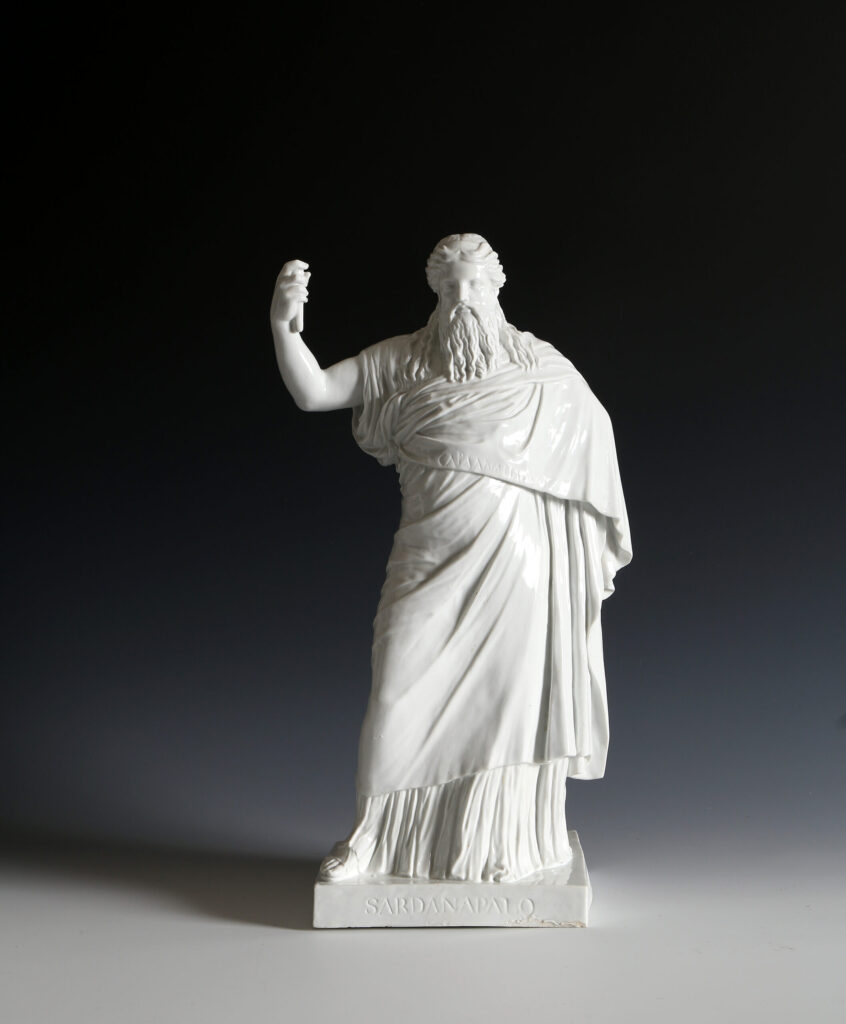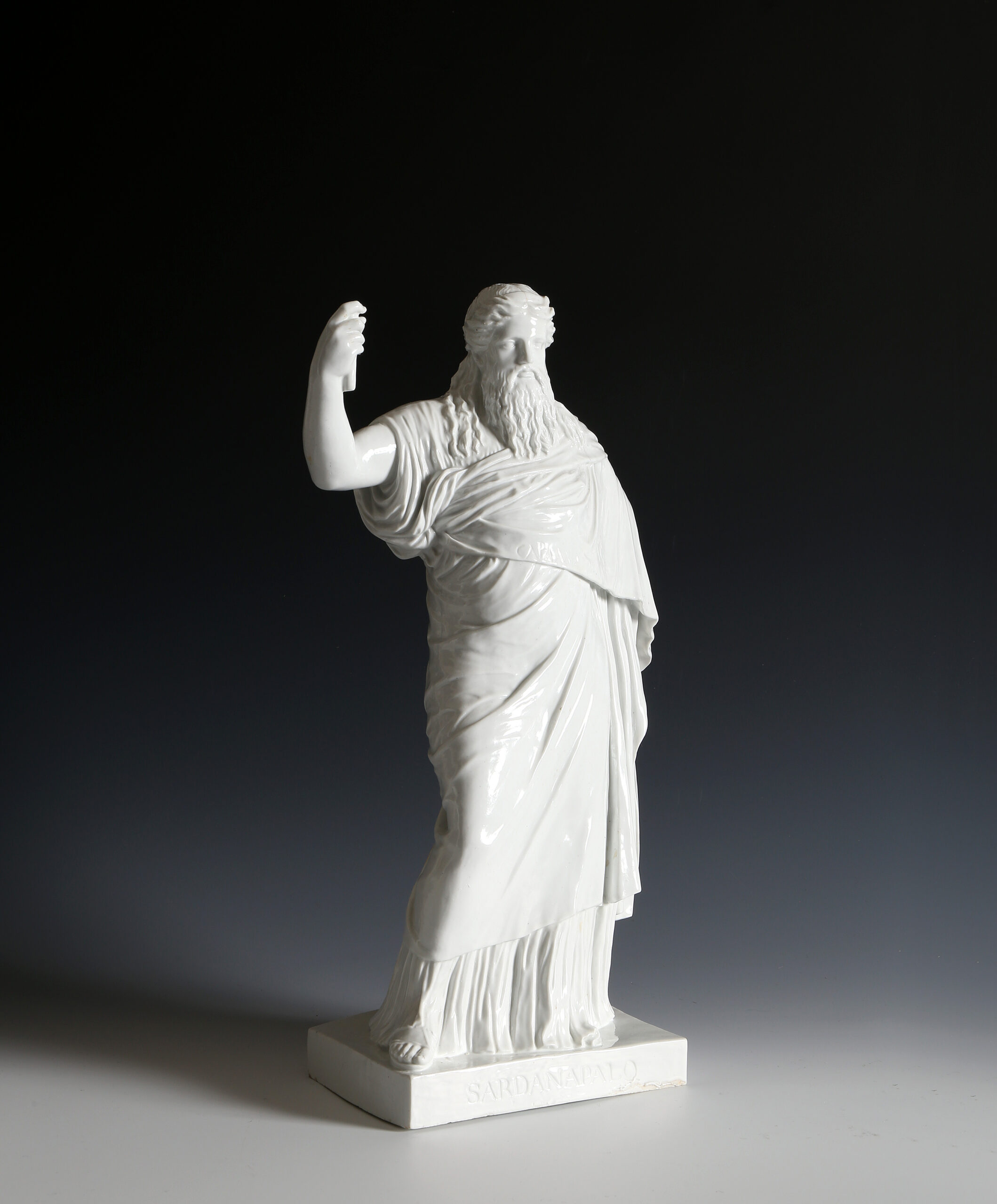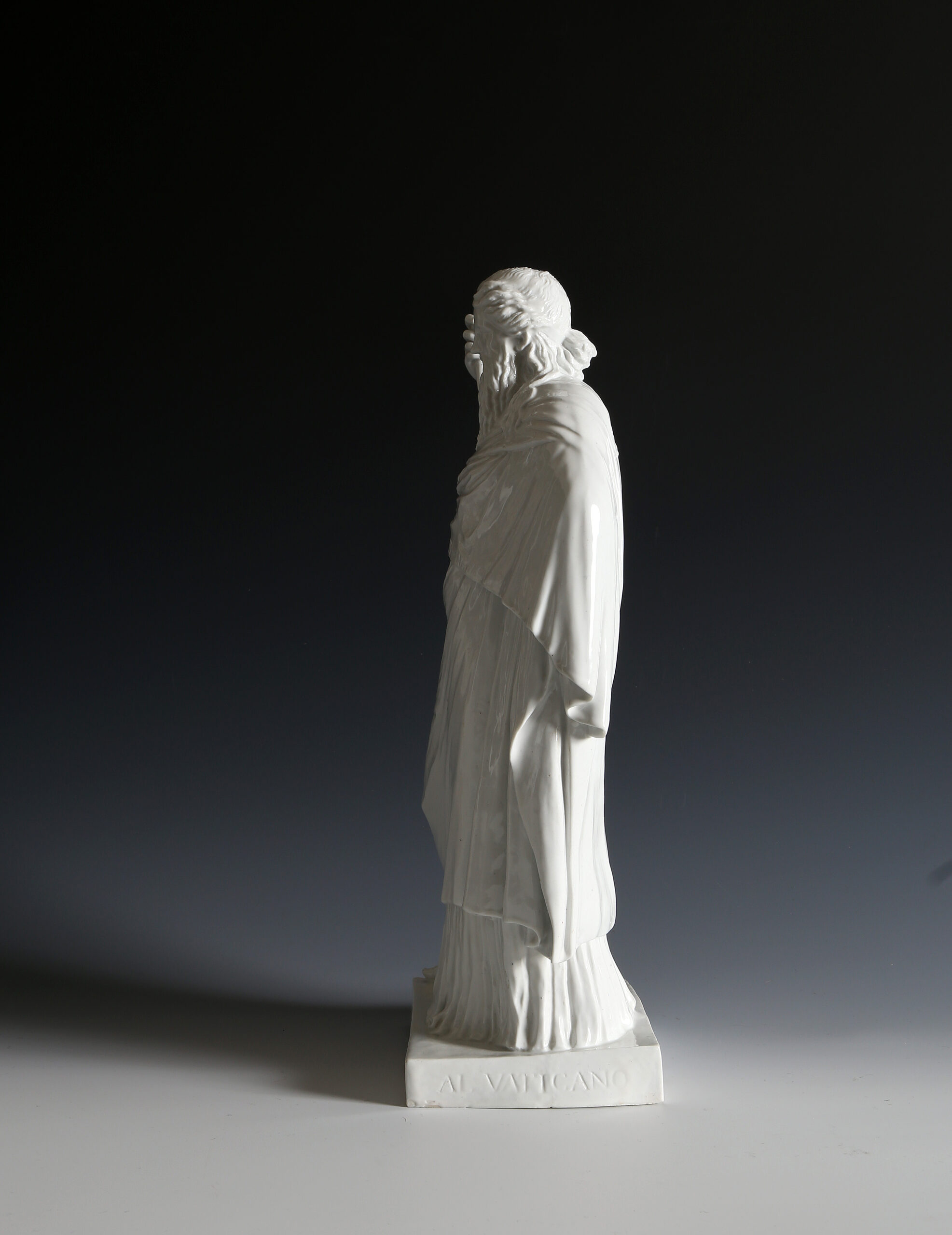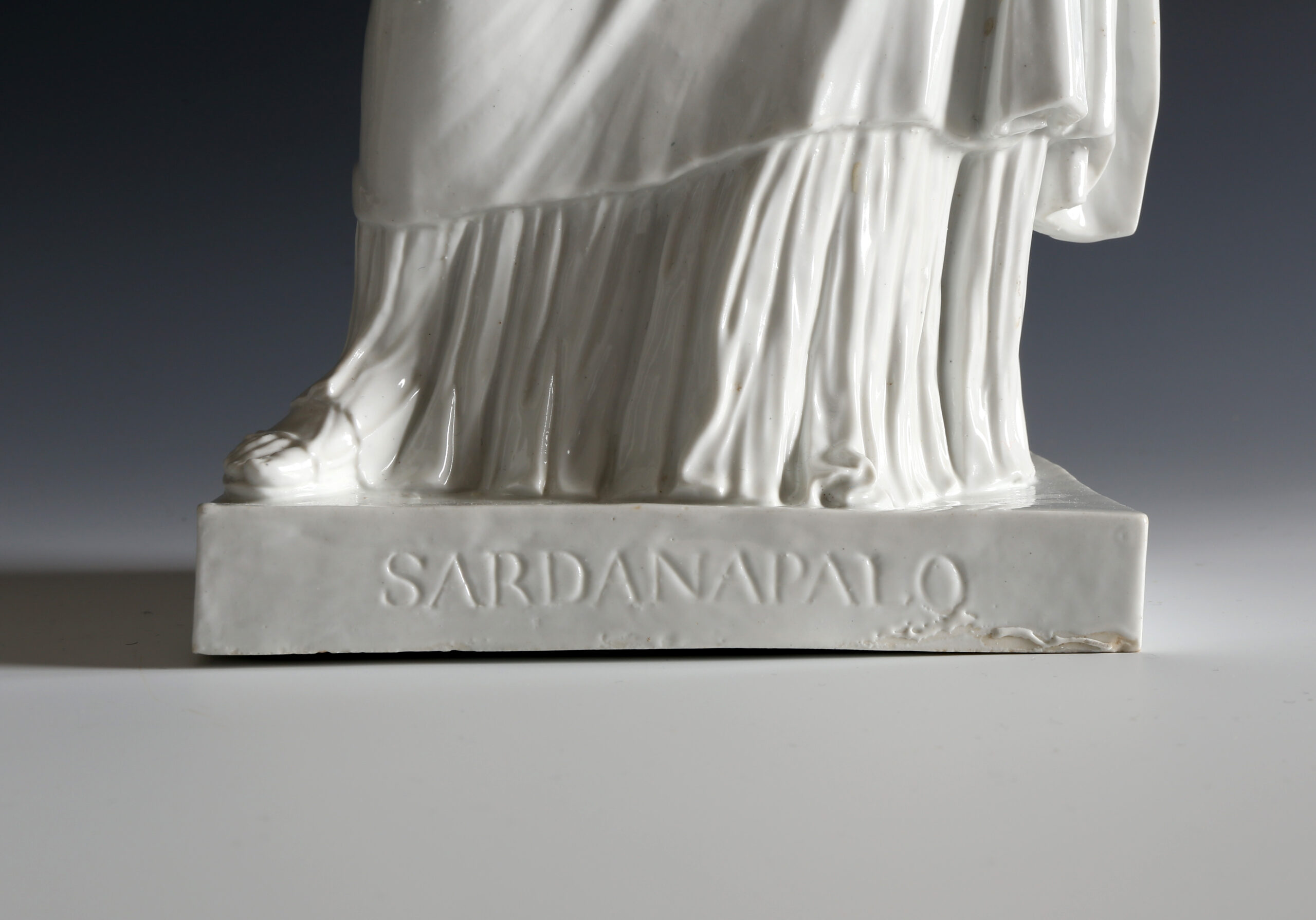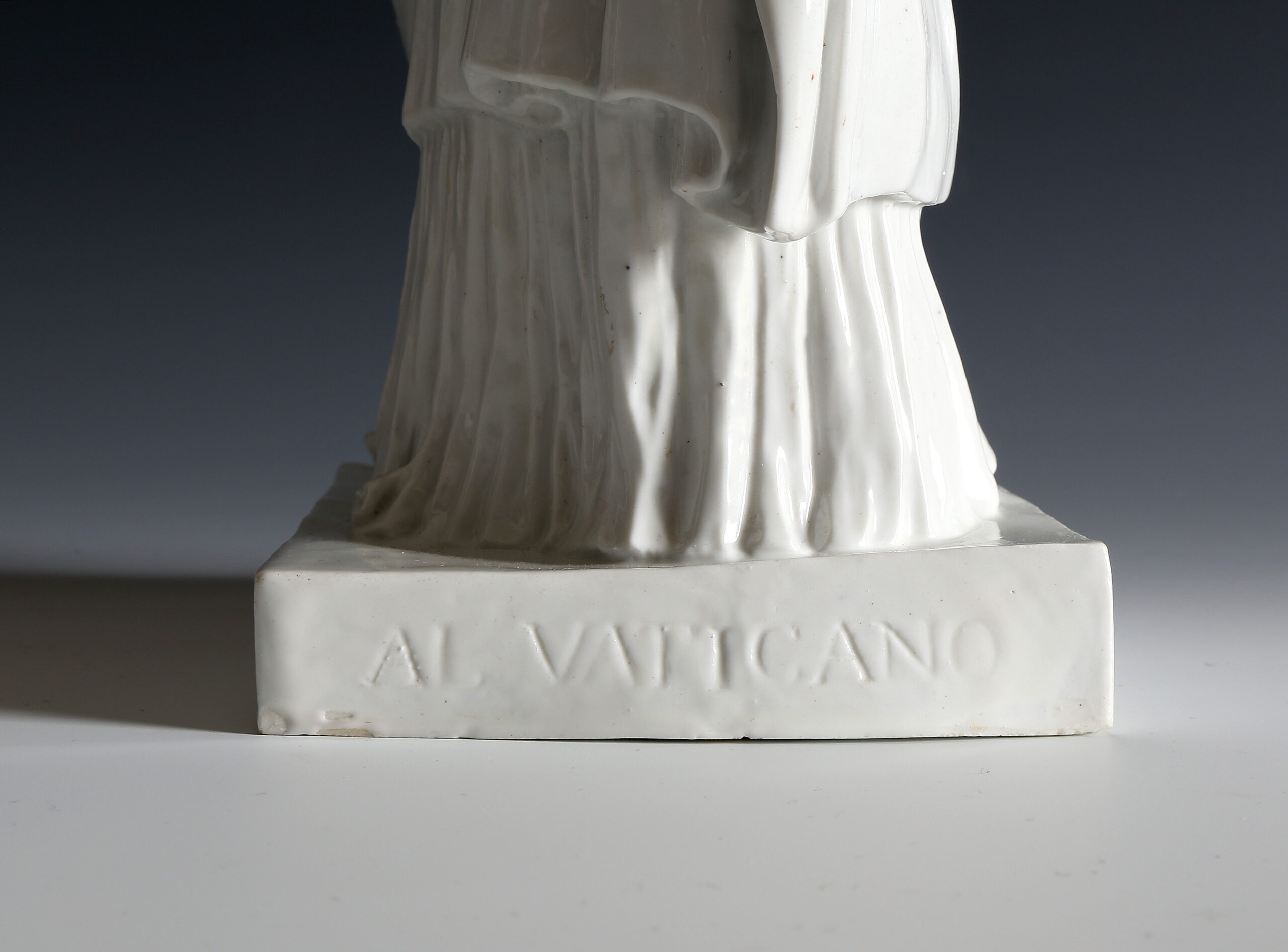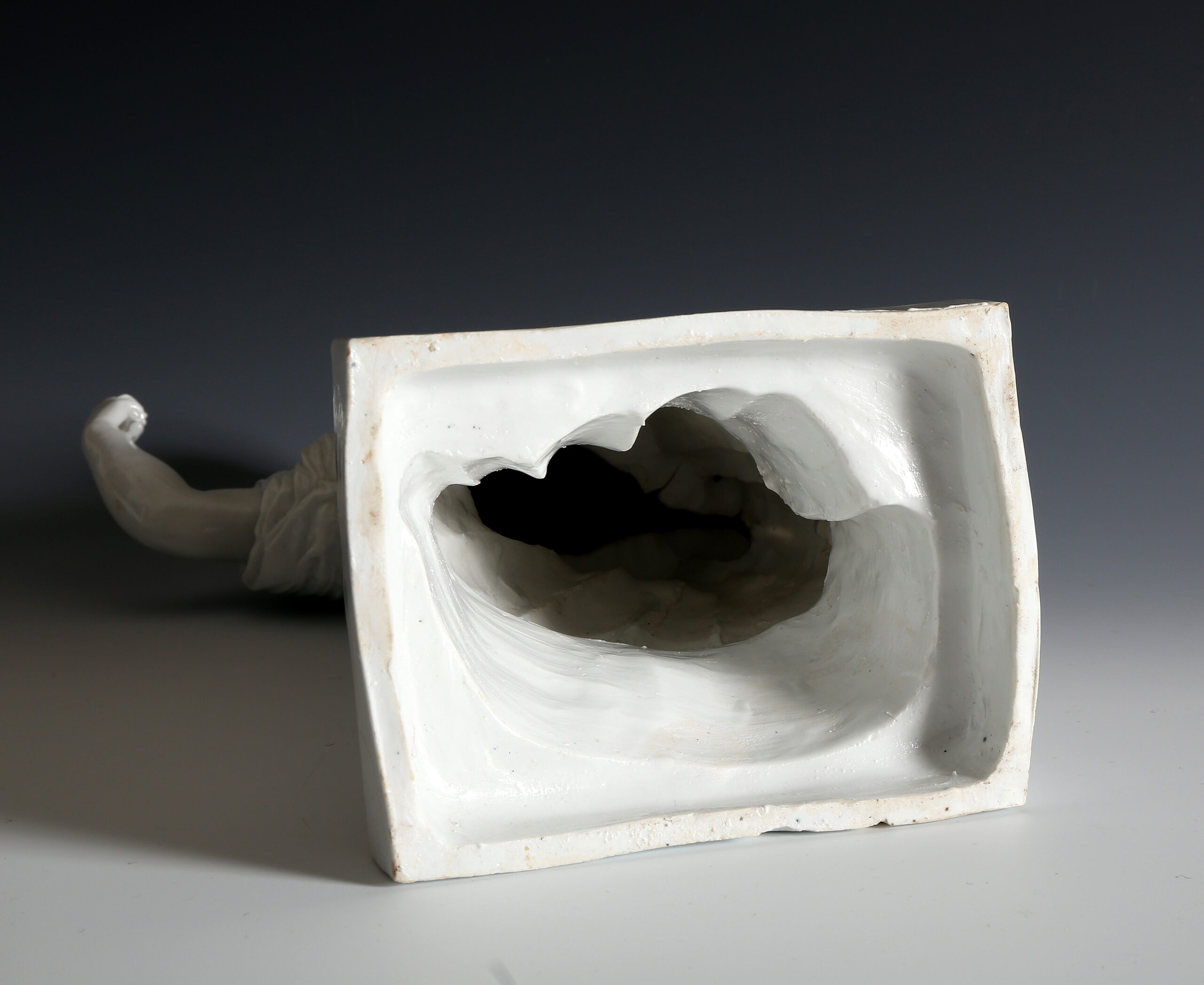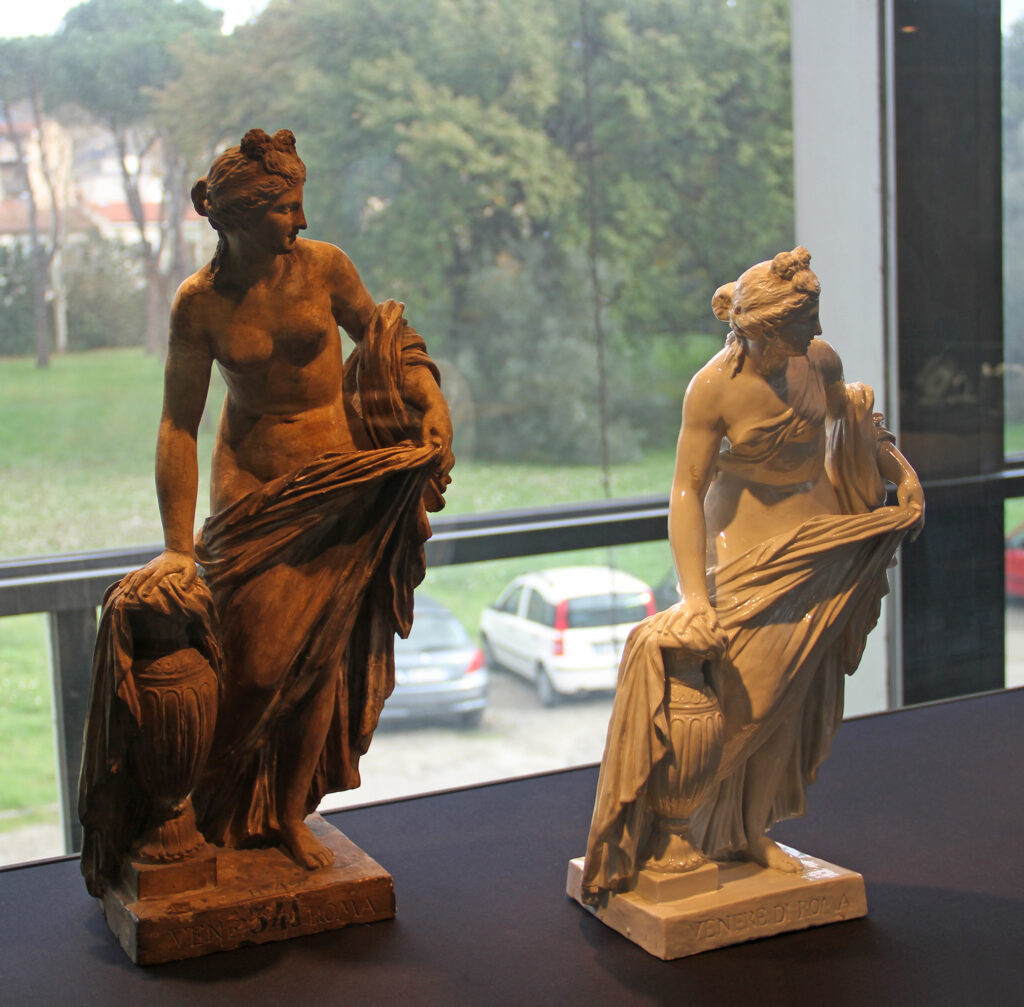This is the only example of this model we have been able to find. It is made in hard paste porcelain with the glaze opacified with tin oxide.
This figure of ‘Dionysus Sardanapalus’ is a reduction of the mid – 1st century AD Roman Hellenistic marble in the Pio Clementino Museum in the Vatican which is, in turn, taken from a lost Greek sculpture of around 325 BC. The Pio Clementino example was acquired by the Vatican from the Quarantotti family in 1772. They acquired it from the collection of the well-known sculptor and restorer Bartolomeo Cavaceppi (1716-1799).
The sculpture, formerly thought to be of Sardanapalus the last King of Assyria, in fact represents the god Dionysus as an old man who is more often portrayed as a youth. Because of the earlier misidentification as Sardanapalus, a 17th century restorer carved ‘ϹΑΡΔΑΝΑΠΑΛΛΟϹ’ (Sardanapalus) across a fold of the robe of the Vatican marble, this is faithfully reproduced in this Doccia example. Johann Joachim Winckelmann and other early 19th century scholars argued that the figure was in fact of Dionysus as an old man.
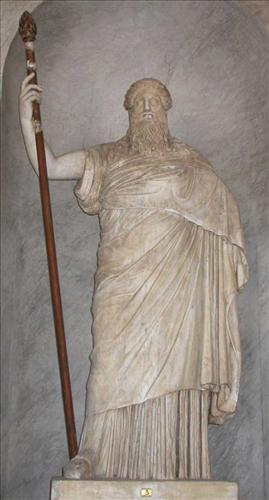 The Vatican model lacked the right arm which was presumably restored by Bartolomeo Cavaceppi.
The Vatican model lacked the right arm which was presumably restored by Bartolomeo Cavaceppi.
Our figure is taken from one of a series of twenty-nine plaster models with inscriptions on the base that are preserved at Sesto Fiorentino in the Museo Richard Ginori della Manifattura di Doccia and are discussed by Rita Balleri (Balleri, 2014, pp. 409- 412). The models are all around 50 cm high and with the subjects being identified in large letters around the base. Balleri notes that they are mostly from important collections such as those of the Vatican, the Capitoline, the Medici and Borghese. She indicates that these models must have come from a workshop with a deep knowledge of ancient statuary and establishes that they are from the workshop of Bartolomeo Cavaceppi, the sculptor and restorer who once owned the original of our figure. They are all in the antiquarian Grand Tour taste.
Bartolomeo Cavaceppi was one of the most important artistic personalities of 18th century Rome. He was chief restorer to the Pope and Cardinal Alessandro Albani. He was a supplier to all the visiting English virtuosi and a close friend of Johann Joachim Winckelmann.
The plaster model from which our figure was made has the historic inventory no. ‘1199 nero’. The plaster is 50.5 cm high and our figure is 16% smaller which is accounted for by the normal shrinkage in firing.
Surviving porcelain versions of this series are rare. The British Museum has figures inscribed ‘VENERE IN ROMA’ and ‘ZENO’ which were bequeathed by Sir Augustus Wollaston Franks in 1897 (Franks 476 & 468,Dawson, 2009, p.18, Figs 6 & 7). Four other models are at Sesto Fiorentino in the Museo Richard Ginori.
Balleri suggests a date in the 1780s for the tin-glazed porcelain model of ‘VENERE DI ROMA’ (a different model to the British Museum ‘Venere in Roma’) at Sesto Fiorentino, which has the breasts covered in the porcelain version (Balleri, p. 423, no. 380) whilst they are exposed in the plaster, she says this was typical of the 1780s. Others of this series are dated a little earlier, a ‘Musa con la tibia’ in a private collection is variously dated to 1760 and 1770-80 (d’Agliano and Melegati, 2008, no. 68, p. 195 and Winter, 2003, no. 7 pp. 50,51). The use of tin oxide to whiten the glaze was generally used after about 1765.
Condition:
A small section of the top of the staff lacking, firing cracks across crown of head and back, no restoration
References:
Rita Balleri, Modelli Della Manifattura Ginori Di Doccia : Settecento E Gusto Antiquario, Roma, 2014
Aileen Dawson, ‘Unexpected Treasures – Doccia porcelain in the British Museum’, Amici di Doccia, Quaderni, III – 2009, pp. 12 – 31
Klaus Lankheit, Die Modellsammlung der Porzellanmanufaktur Doccia: Ein Dokument italienischer Barockplastik, 1982
Andreina d’Agliano and Luca Melegati, Ricordi dell’Antico, Sculture, porcellane e arredi all’epoca del Grand Tour, 2008
John Winter, Le Statue del Marchese Ginori, sculture in porcellana bianca di Doccia, 2003
Price: £36,000


